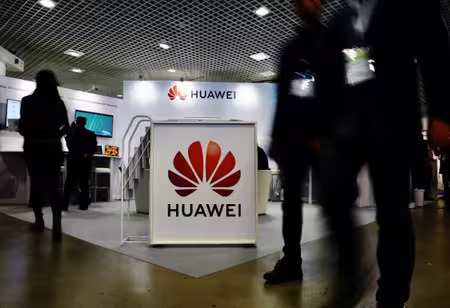
Huawei Technologies Confronts Nvidia's AI Chip Supremacy in China


Huawei Technologies aims to compete with Nvidia’s upcoming AI chips in China. Huawei intends to increase the production of its Ascend 910C chips to around 600,000 units by 2026.
That’s an increase from about 300,000 units this year. Along with additional products in the Ascend series, the company aims to manufacture as many as 1.6 million chips by 2026, suggesting that it and its partner, Semiconductor Manufacturing International Corp. (SMIC), have identified solutions to address limitations imposed by U.S. sanctions.
Nevertheless, Nvidia shares continue to be robust, fluctuating higher on Monday near its 52-week peak of $184.55.
The initiative emphasizes Huawei’s importance as China seeks to reduce its dependence on overseas chips.
Beijing emphasized semiconductor self-sufficiency following the 2020 pandemic-driven chip crisis, which underscored its significance in the automotive, defense, and artificial intelligence industries.
Also Read: Investopia 2025: A Grand Plan to Revitalize the Global Investment Landscape
Huawei launched new Ascend models scheduled for release until 2028. The firm anticipates releasing a successor to the 910C, named the 910D, in late 2026, with an initial goal of 100,000 units. In the long run, it aims to introduce the Ascend 950, 960, and 970 chips while striving to create competitive options to Nvidia’s offerings.
Even with these goals, Huawei's chips continue to lag behind Nvidia's in terms of performance. Analysts predict that the Ascend 950 will achieve merely 6percent of Nvidia's upcoming VR200 superchip. Huawei is now fabricating chips utilizing SMIC’s improved 7-nanometer technology, while Nvidia's 4-nanometer Blackwell GPUs are produced by Taiwan Semiconductor Manufacturing Co.
Also Read: A Study of Singapore's Leadership Strategy in Tourism in 2025
Nvidia still earns billions from China, even with U.S. export restrictions.
Chinese companies placed orders for approximately one million H20 chips—valued at over $16 billion in just one quarter—accounting for $17 billion of Nvidia’s $18 billion H20 revenue since 2025. That demand represented 13percent of its revenue for fiscal 2024.
Also Read: 5 Interesting APAC CTO Appointments in August 2025
Bernstein anticipates Nvidia’s market share in China will decrease to 55percent this year, down from 66percent in 2024. Bank of America analyst Vivek Arya continues to estimate potential China sales between $6 billion and $10 billion through January, although $3 billion to $4 billion could experience delays from supply issues. CEO Jensen Huang has characterized China as a $50 billion opportunity if Nvidia persists in delivering chips that comply with sanctions.

